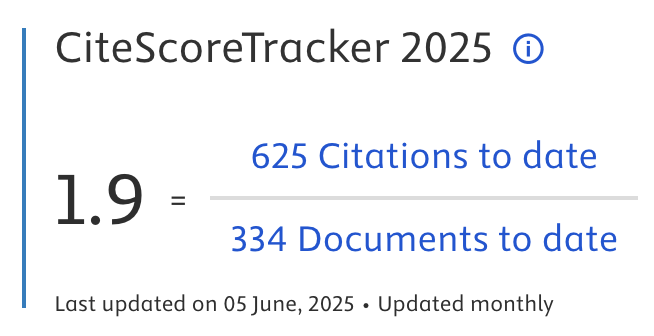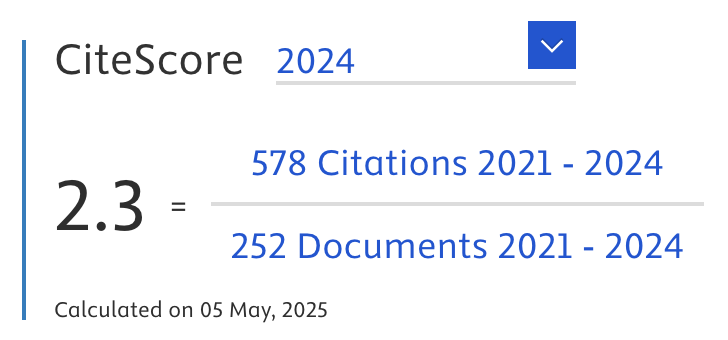CS-based Lung Covid-Affected X-Ray Image Disorders Classification using Convolutional Neural Network
Abstract
Lung diseases, such as pneumonia, significantly affect the respiratory system, especially the lungs. This condition causes various degrees of lung damage in patients of all age groups, including the elderly, adults, and children. Even after treatment and recovery, diagnosing lung damage remains important, which can be done using rapid tests, clinical evaluations, CT scans, or X-rays. This study focuses on the classification of X-ray images of lungs affected by pneumonia and normal lungs, using the Convolutional Neural Network method based on Compressive Sensing (CS) simulated using MatLab. The purpose of the study is to determine the performance by calculating the confusion matrix value. The number of datasets used for normal lungs and those affected by pneumonia is 300 X-ray images from several different sources, with 60% training data, 30% validation, and 10% testing. The addition of the compression process causes a decrease in image quality, expressed in PSNR, as well as a decrease in classification parameters such as accuracy. Compared with previous research, the system without compression produces the highest accuracy. The results of the study can help classify lungs affected by pneumonia.
Article Metrics
Abstract: 125 Viewers PDF: 67 ViewersKeywords
Full Text:
PDFRefbacks
- There are currently no refbacks.

Journal of Applied Data Sciences
| ISSN | : | 2723-6471 (Online) |
| Collaborated with | : | Computer Science and Systems Information Technology, King Abdulaziz University, Kingdom of Saudi Arabia. |
| Publisher | : | Bright Publisher |
| Website | : | http://bright-journal.org/JADS |
| : | taqwa@amikompurwokerto.ac.id (principal contact) | |
| support@bright-journal.org (technical issues) |
 This work is licensed under a Creative Commons Attribution-ShareAlike 4.0
This work is licensed under a Creative Commons Attribution-ShareAlike 4.0





.png)